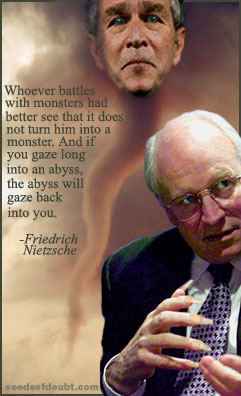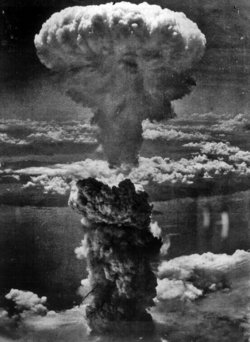| For the first time in more than 20 years, U.S. nuclear-weapons scientists are designing a new H-bomb, the first of probably several new nuclear explosives on the drawing boards. If they succeed, in perhaps 20 or 25 more years, the United States would have an entirely new nuclear arsenal, and a highly automated factory capable of turning out more warheads as needed, as well as new kinds of warheads. "We are on the verge of an exciting time," the nation's top nuclear weapons executive, Linton Brooks, said last week at Lawrence Livermore weapons design laboratory. Teams of roughly 20 scientists and engineers at the nation's two laboratories for nuclear-explosive design — Livermore and Los Alamos in New Mexico — are in a head-to-head competition to offer designs for the first of the new thermonuclear explosives, termed "reliable replacement warheads" or RRWs. Designers are aiming for bombs that will be simpler, easier to maintain over decades and, if they fell into terrorists' hands, able to be remotely destroyed or rendered useless. Once the designs are unveiled in September, the Bush administration and Congress could face a major choice in the future of the U.S. arsenal: Do they keep maintaining the existing, tested weapons or begin diverting money and manpower to developing the newly designed but untested weapons? Administration officials see the new weapons and the plant to make them as "truly transformative," allowing the dismantlement of thousands of reserve weapons. But within the community of nuclear weapons experts, the notion of fielding untested weapons is controversial and turns heavily on how much the new bombs would be like the well-tested weapons that the United States already has. "I can't believe that an admiral or a general or a future president, who are putting the U.S. survival at stake, would accept an untested weapon if it didn't have a test base," said physicist and Hoover Institution fellow Sidney Drell, a longtime adviser to the government and its labs on nuclear-weapons issues. "The question is how do you really ensure long-term reliability of the stockpile without testing?" said Hugh Gusterson, an MIT anthropologist who studies the weapons labs and their scientists. "RRW is partly an answer to that question and it's an answer to the question (by nuclear weapons scientists) of 'What do I do to keep from being bored?'" The prize for the winning lab is tens, perhaps hundreds of million of dollars for carrying its bomb concept into prototyping and production. If manufactured, the first RRW would replace two warheads on submarine-launched missiles, the W76 and W88, together the most numerous active weapons and the cornerstone of the U.S. nuclear force. Altogether, the nation has 5,700 nuclear bombs and warheads of 12 basic types, plus more than 4,200 weapons kept in reserve as insurance against aging and failure of the active, fielded arsenal. Most are 25-35 years old. All were exploded multiple times under the Nevada desert before U.S. nuclear testing halted in 1992. It is in most respects the world's most sophisticated nuclear arsenal, and beyond opposition at home to continued testing, ending testing made sense to discourage other nations from testing to advance their nuclear capabilities. Faced by the Soviet Union, Cold War weapons scientists devised their bombs for the greatest power in the smallest, lightest package, so thousands could be delivered en masse and cause maximum destruction. Designers compare those weapons to Ferraris, sleek and finely tuned. Scientists at the weapons laboratories are laboring to keep the bombs and warheads in working order, by examining them for signs of deterioration and replacing parts as faithfully to the original manufacturing as possible. It is an expensive and not especially stimulating job. Some worry that an accumulation of small changes could undermine the bombs' reliability. So far, every year since 1995 directors of the weapons labs and secretaries of defense and energy have assured two presidents that the weapons are safe, secure and will detonate as designed. The new reliable replacement warheads are actually an old idea that 1950s-era weapons designers called, with some disdain, the "wooden bomb." Bomb physicists were proud of their racier, more compact designs and figured they were plenty dependable already. The wooden bomb by comparison was boring. "They said, 'Well heck, that isn't a challenge to anybody'," recalled Ray Kidder, a former Livermore physicist who found a chilly reception to proposals in the 1980s for clunkier, more reliable designs. "It was like saying, 'Well, why don't you make a Model A Ford.'" Now the wooden bomb is back in vogue. With fewer, simpler kinds of warheads, the argument goes, the arsenal could be maintained more inexpensively |
Tuesday, February 07, 2006
Holy Crap: They are going to blow apart the real Trinity
Lab officials excited by new H-bomb project
LINK
Subscribe to:
Post Comments (Atom)







No comments:
Post a Comment